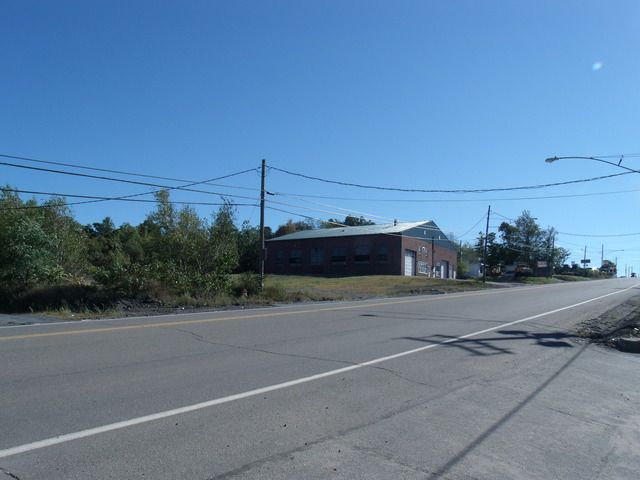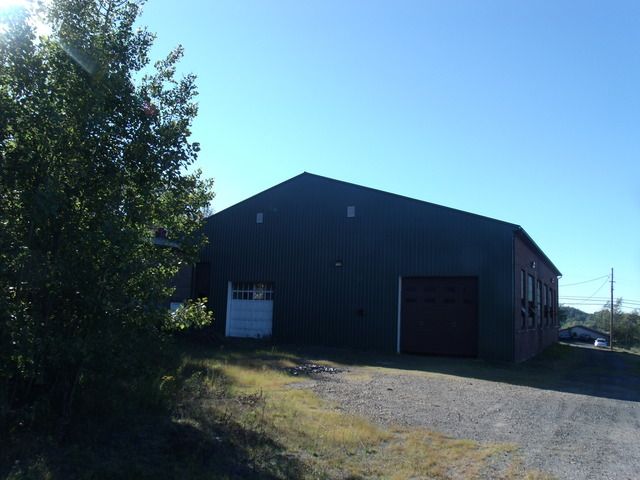> I'm 54 and can't see in the dark like I could at 20
Since you are over 40, you (we all) soon must admit you need Reading Glasses for anything further than arm-length. (Your far vision may be good til you are 90, but the inner limit of near vision keeps moving out.) Get some cheap "+2" readers at the drug store. A "+2" lets your eyes focus on 19 inches like it was faraway. After you pass 60, "+3" may be needed to have some reserve at 12" distance.
> And why does a 4,000 lumen led replace my 14,400 metal halides?
It doesn't; unless the Halide is throwing ALL over and the LED can SPOT-light the right place. (And my cheatsheet says 400W Halide is 36,000 Lumens?)
> Are these light bulb salesmen lying to me?
More likely don't care to KNOW their business. (If they knew, then it would be lying.)
> rebuilding of rotating electrical machinery
You want 50-100 foot-candles where you do fine work.
You probably don't need 50-100FC everywhere. If you drag/hoist stuff to a work area you only need the bright light there.
Other spaces can be lit to 20FC (easy work) down to 2FC (dead storage).
If you need a quick-read of a nameplate in dead storage, use flashlight or drop-light. (Clip-light on reading-specs is handy.)
Lamp size should be "large" for best efficiency and cost, BUT a large number of smaller lamps gives more even lighting (and no dead-zone when a lamp fails). And you probably want at least four lamps around any specific spot to avoid deep shadows. The best-balance is *usually* when lamp spacing is similar to height from table to lamp. Roughly 16' ceilings and 4' tables this is a lamp every 12 feet.
> 14 high bay 400 watt hid lights ...17 feet to the bottom
14 lamps over 9,000sf suggests 25' on center. Taking 13' light to table, this violates the spacing = height rule of thumb, by nearly 2:1! 400W Halides are about 36,000 Lumens each, you have 14*36,000L= 504,000 Lumens, over 9,000sf is 56 Foot Candles, good *average*. (Taking your 14,000 Lumen figure, 22FC, which aint bad.) You *do* have "good light", except you have puddles of one-point light and much darkness between with horizontal glare.
In short: run 4 times as many lights of 1/4th the output. Much more uniform. 56 lamps.
You could go down to 8'OC, but 140 light-points is a LOT of wiring for one building, and the smaller lamps tend to be lower efficiency. However 140 2-tube 4-foot fluorescents 8'OC would be very good light, and is nearly as efficient as any other good-color light. 2-tube fixtures butted end-end all the way down, 10'OC, is similar and maybe less fuss. In a few years LED-tubes will be affordable, shave a bit off the running cost.
In general-- Foot Candles times Square Feet is your net Lumens you have to buy. Round-up a little for good reflectors, double if half the light goes useless directions. 9,000sf*70FC= 630,000 Lumens.
Total area (overall or in a zone), divided by height squared (9,000/13/13= 53) is the minimum number of lamps.
Total Lumens divided by number of lamps is the optimum Lumens per lamp. 630,000/53= 12,000 Lumens per lamp. 1,000W Incandescent, 12-lamp @100W/ea chandelier, 175W Halide, 6-tube 4' Fluorescent, 100 (actual) Watt LED.....
For the Bright Work Space:
Each lamp directly feeds 12'*12'= 144sf. At 75FC this is 10,800 Lumens. Using century-old technology this is a 1,000 Watt incandescent bulb (>10,000 Lumens) in a hi-bay reflector. At 900sf Bright Work Area this is 7 lamps. Start by penciling a row of 3 lamps on 12 foot centers 6 feet from a wall, and another row of 12'OC 12 feet over from that:
* * * 3 lamps
* * * 3 lamps
- - - wall
This gives around 24' by 36' or 864sf at something over 70FC, nice and bright. In the center 12' by 24' area there are always 4 lights on an object. It costs a buck an hour to run, which is probably acceptable for your prime work space (we may do better).
You can get 10,000 Lumens from a 175W Metal-Halide (gives $0.18/hour cost for the area!). Installed cost around $1200. The color is dubious and I'm not keen about discharge lamps around rotating machines. But it is a standard mature technology.
Curly-fluorescents at 55 actual Watts give 3,000 Lumens. 24 of these in say a 4x6 array over 900sf would be good light. Costs (first and running) are in-reach of Halide, reasonable.
4-foot fluorescents have been the standard for small/medium workspaces. I like four tubes hung 4 feet above a 4-foot bench- that's good light.
I am finally sure that LEDs *will* replace most other lamps, but that day may be next year. Prices have fallen dramatically over the last 2 years and I don't think the bottom-feeders have really got started. I put one LED "fluorescent tube" in my garage, it is great, but the price has to be half before I would use them wholesale.
One 4-foot T8 tube or LED-tube gives 2,000 Lumens. That's 50 tubes. You can get 8-tube fixtures, six fixtures laid out like the six 1,000W incandescents would be good light. The LED-tubes are 18W each, 900W total, cheap to run. Perhaps $3,000 to install complete. (1000W incandescents may be $600 to install but the LEDs would pay-back in 15 months of all-day running.)
In the live-storage area, push the spacing to 16' and aim for 20FC. Each lamp is 16'*16'*20FC= 5,120 Lumens. A 2-tube fixture every 14' will do 20FC. I see an LED fixture at 48W and 3,400 Lumens which would work on 13' centers, nice and even. But it is $350 so $7000 to cover half the building! 55W curly-fluorescent 13'OC is a much better deal.
To put 5FC over 4,500sf of dead-storage, with around 12'OC for even coverage, you want 720 Lumens per lamp. All the "60W equiv" curly and LED jobs do that. If your labor is cheap, put a plain lamp-socket every 12', lamp with whatever you find. By next year the LED "flood lamps" (reflector style) in "65W" and "100W" equivalencies may be real affordable and nicer light.
> throw a lot of light into that side yard?
"Lot" like read a newspaper? Or like go 100 feet out and not trip on stray conduit?
I have a puny 250W Halogen reflector and I can "find" my mail-box 500 feet away; but even at 50 feet it isn't any kind of "lot" of light.
I'd be looking at street-lights or parking-lot lights. It's not really a new problem. Thing is you may be wanting 2 to 10 times more light than a street or even many parking lots provide, so many times more lamps per acre.
"Mercury discharge" technology (now Sodium and Halide) is well proven outdoors.
Location is important. To hit far-out with useful light (not just lateral glare) it should be high on the building or out on a pole in the yard. Several poles-- again you want many-directional light or you will always be in your own shadow.
If the magic-LED salesman has a different idea, get him to front you one lamp, try it. If it does 1/10th the job, 10 lamps in 2 places might work. I suspect it will do 1/100th the job and the cost of 100 units will be absurd. However LED street-lighting is become more practical so maybe there are suitable devices.


